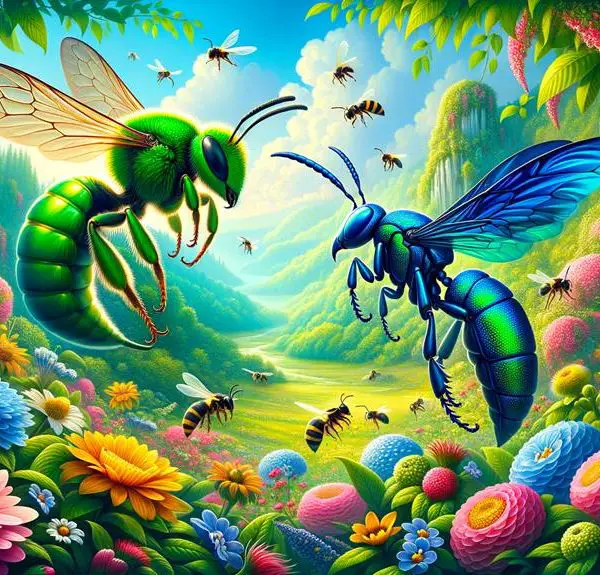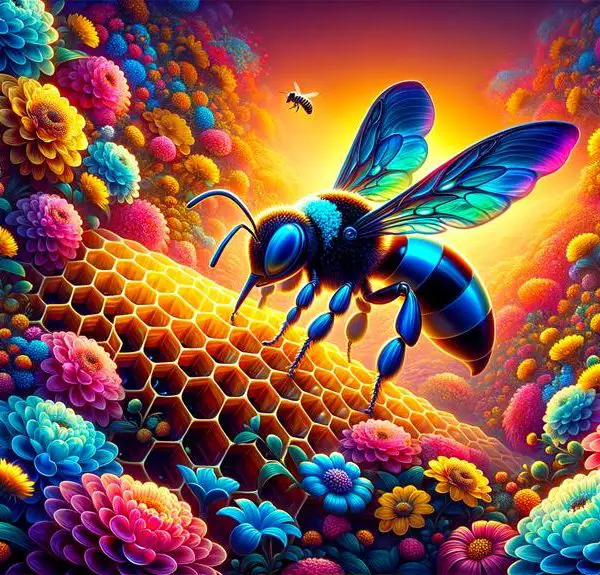Behold the fascinating world of cuckoo bees, notorious freeloaders known for their unique, yet puzzling parasitic lifestyle.
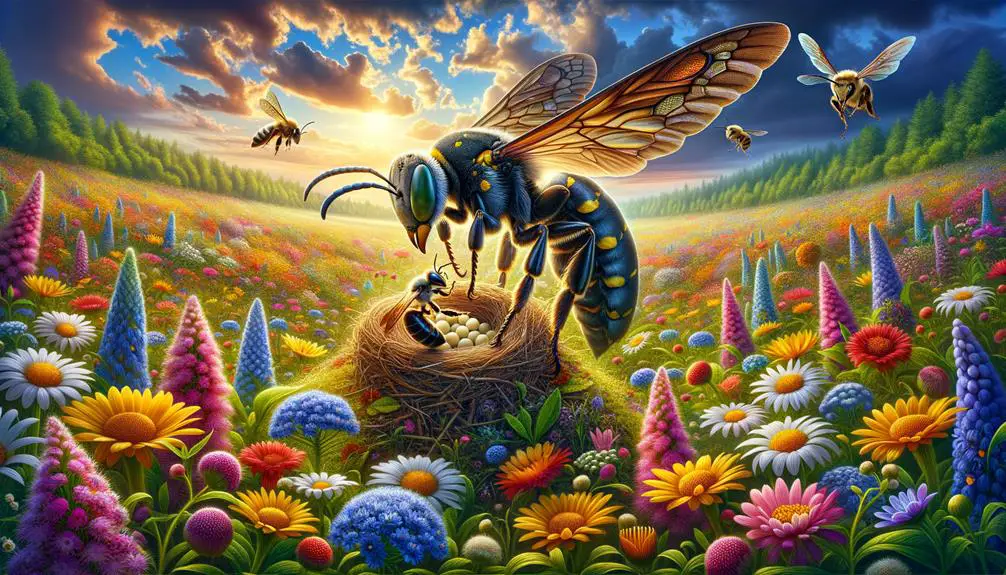
What Do Cuckoo Bees Do?
Imagine you're a landlord and one day you discover squatters living in your property, not only living there but raising their young too. This is similar to what cuckoo bees do. They're the freeloaders of the bee world, opting to lay their eggs in the nests of unsuspecting host bees.
But, why do they do this and what impact does this unique lifestyle have on the host bees and the wider ecosystem? Let's explore this fascinating, yet underappreciated aspect of bee biology.
Understanding Cuckoo Bees' Lifestyle
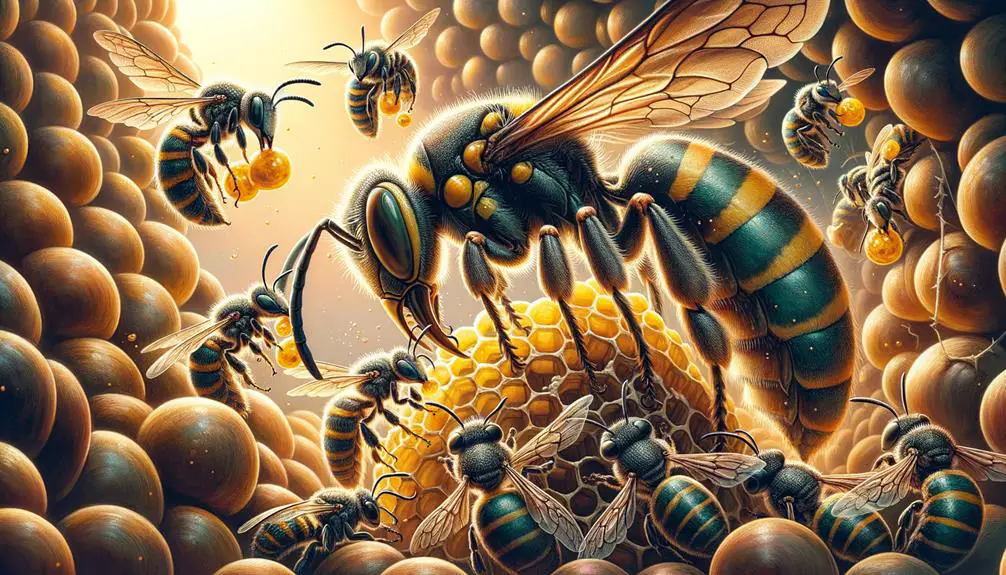
Despite their deceptive name, cuckoo bees lead an intriguing parasitic lifestyle, infiltrating the nests of unsuspecting host bees to lay their own eggs, thereby ensuring their offspring's survival at the expense of the host's progeny. You may assume, given their name, that these bees have a lifestyle similar to that of the cuckoo bird, which is known for the same 'brood parasitism.' You'd be quite right in this assumption.
The cuckoo bee, after stealthily entering the host's nest, often kills the host's eggs or larvae. This is an intriguing, albeit ruthless, survival strategy. It ensures less competition for resources and higher chances of survival for the cuckoo bee's progeny. Not all cuckoo bees are so violent, though. Some simply lay their eggs and leave, relying on the host bee's parental instincts to care for their young.
A few species of cuckoo bees have evolved to look almost identical to the host bees they parasitize, which can fool the host bees into thinking the infiltrator is one of their own. This mimicry displays the remarkable adaptability of these bees and their fascinating, if deceptive, lifestyle.
Cuckoo Bees' Unique Reproduction Strategy
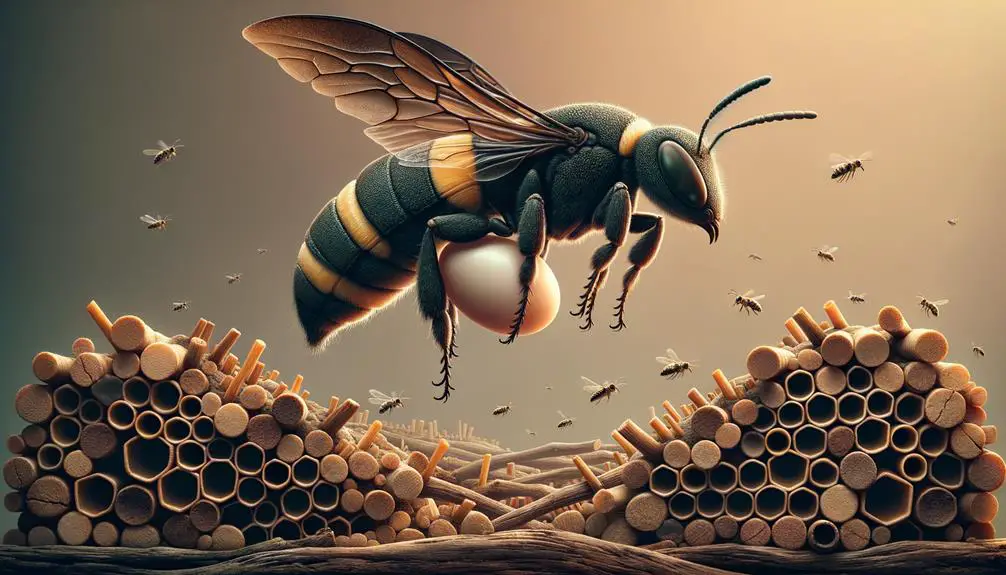
In understanding the unique reproduction strategy of cuckoo bees, it's crucial to note that these crafty insects rely heavily on cunning and deceit, rather than traditional parenting. They've evolved an intriguing method that circumvents the usual bee duties of nest-building and larva-rearing. You'll find that this approach saves energy, making it a fascinating example of evolutionary efficiency.
Unlike most bee species, cuckoo bees don't construct their own nests. Instead, they infiltrate the nests of other bee species, employing stealth and trickery. Your attention might be piqued to know that female cuckoo bees possess a hardened, pointed abdomen, specially designed for combat and egg-laying in hostile environments.
Once inside a host's nest, the female cuckoo bee lays her eggs, often in the cells already provisioned by the unsuspecting host. It's here that the cuckoo bee larvae, upon hatching, consume the food left by the host bee for its own offspring. In some instances, cuckoo bee larvae even consume the host's eggs or larvae, ensuring their own survival.
This parasitic strategy, while harsh, highlights the adaptability and resilience of these intriguing insects in their quest for survival.
Interactions With Other Bee Species
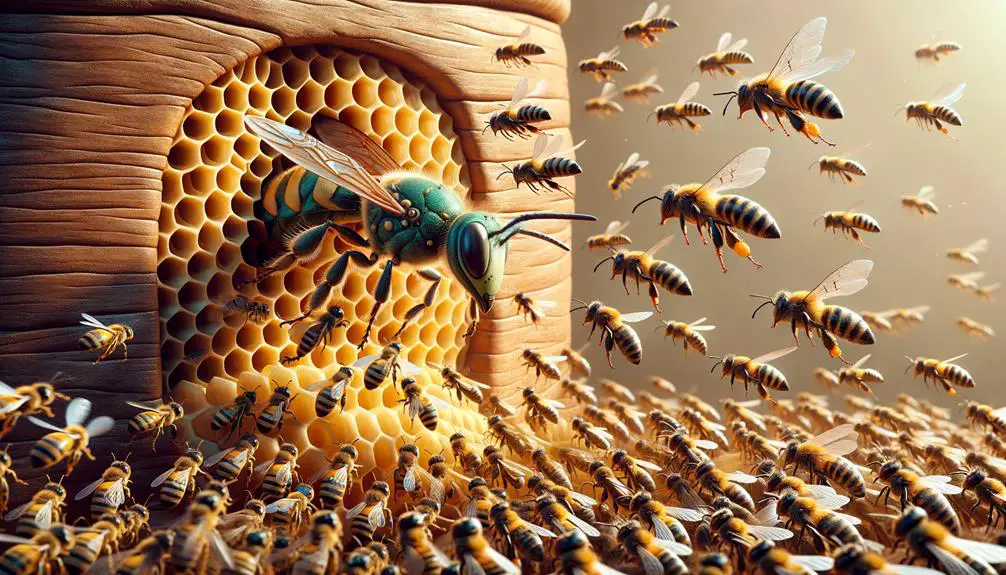
Navigating the world of bees, cuckoo bees have remarkable interactions with other species, relying on their unsuspecting counterparts' labor to ensure their own offspring's survival. This clever exploitation of other bees' hard work is a fascinating display of survival strategy.
Cuckoo bees are brood parasites, meaning they lay their eggs in the nests of other bee species. When the cuckoo bee larva hatches, it consumes the host bee's pollen stores, outcompeting or even killing the host's own offspring.
Remarkably, cuckoo bees have adapted to mimic the scent of the host bee species, thus avoiding detection. This olfactory camouflage allows them to infiltrate the host's nest without raising alarms.
- Cuckoo bees don't build their own nests; they use others'.
- They're masters of deception, imitating the scent of host species.
- Cuckoo larva may outcompete or eliminate host offspring.
Cuckoo Bees' Role in the Ecosystem
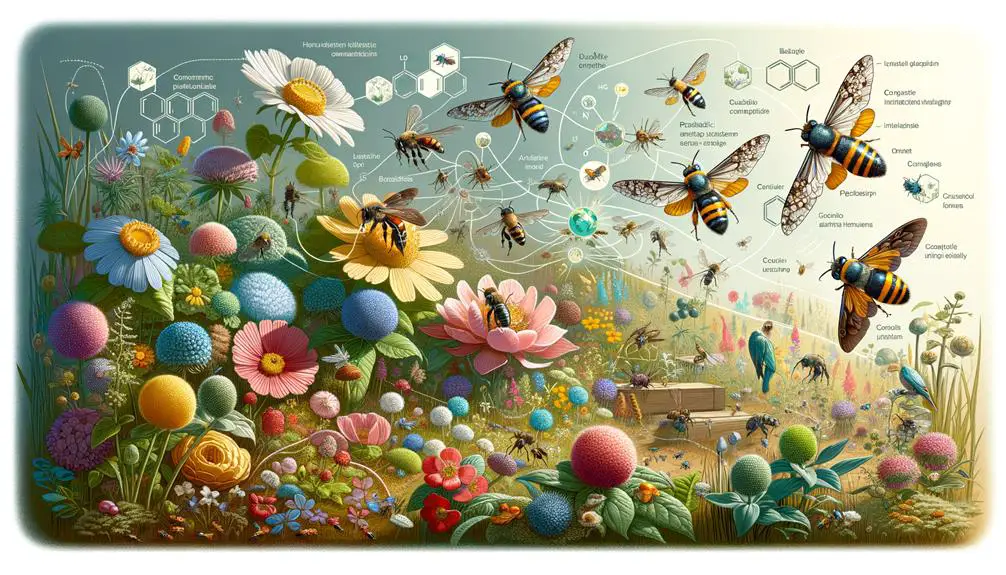
While their deceptive behavior might seem detrimental, cuckoo bees play a complex and crucial role in the ecosystem. They're integral to maintaining balance in local bee communities. Let's delve into some specifics.
Cuckoo bees can indirectly aid in flower pollination. Although they don't collect pollen, they do visit flowers for nectar and can inadvertently transfer pollen grains. Additionally, their parasitic lifestyle can control host bee populations, preventing them from becoming overly dominant.
Here's a small table summarizing their role:
Role in Ecosystem | Explanation |
|---|---|
Indirect Pollinators | Visit flowers for nectar, potentially transferring pollen. |
Predators | Parasitic lifestyle controls host bee populations. |
Prey | Provide food source for higher-level predators. |
Biodiversity Indicators | Changes in their numbers can indicate changes in biodiversity. |
Ecosystem Engineers | Their burrowing can affect soil composition and aeration. |
You see, their presence or absence can indicate changes in biodiversity, making them important for ecological monitoring. They also serve as food for higher-level predators, contributing to the food chain. Lastly, they're "ecosystem engineers". Their burrowing behavior affects soil composition and aeration, impacting other organisms and plant growth. So, cuckoo bees aren't just freeloaders; they're vital contributors to our ecosystems.
Threats and Conservation of Cuckoo Bees
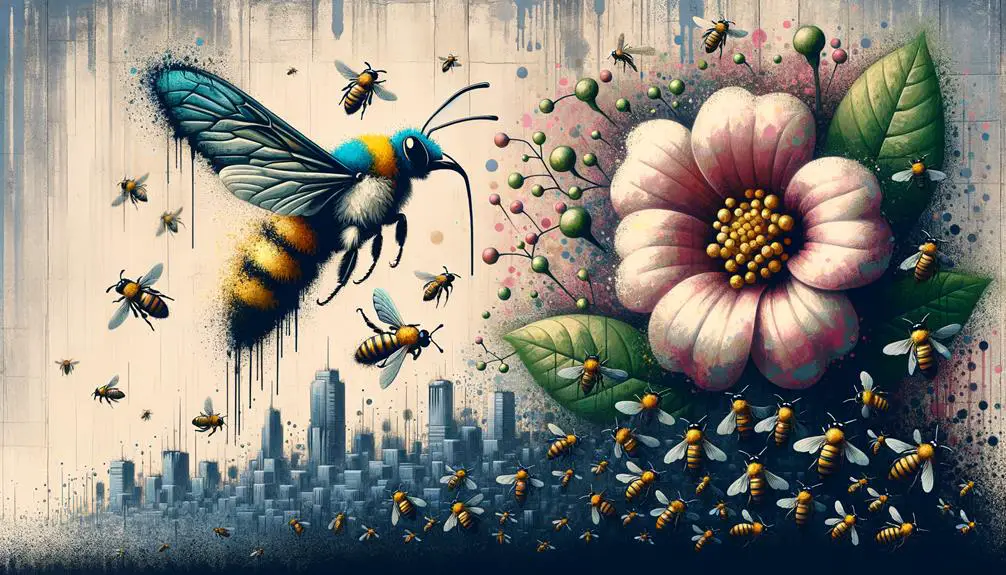
Despite their crucial role in maintaining ecological balance, cuckoo bees face numerous threats that have led to the need for their conservation. Pesticide exposure, habitat destruction, and climate change pose significant challenges to these unique bees.
Over the years, human activities have caused an increase in the use of pesticides. You may not realize it, but these chemicals can detrimentally affect cuckoo bees, leading to population declines. Moreover, habitat destruction due to urbanization and agricultural expansion has resulted in the loss of nesting sites and food sources for these bees, further endangering their survival.
Lastly, climate change, with its erratic weather patterns and rising temperatures, disrupts the usual life cycle of cuckoo bees.
To keep you engaged, here are some of the steps taken for the conservation of cuckoo bees:
- Regular monitoring and research to understand their population trends and threats better.
- Implementing policies to limit the use of harmful pesticides.
- Initiatives to restore and conserve their natural habitats.
Conclusion
In conclusion, you've learned that cuckoo bees are unique creatures. They lead solitary lives, practice a rare reproductive strategy, and interact with other bees in fascinating ways.
They're integral to our ecosystem, despite the threats they face. So next time you spot a cuckoo bee, remember their crucial role and the need to protect them.
Understanding and appreciating their existence is just one small step towards a more balanced, biodiverse world.

